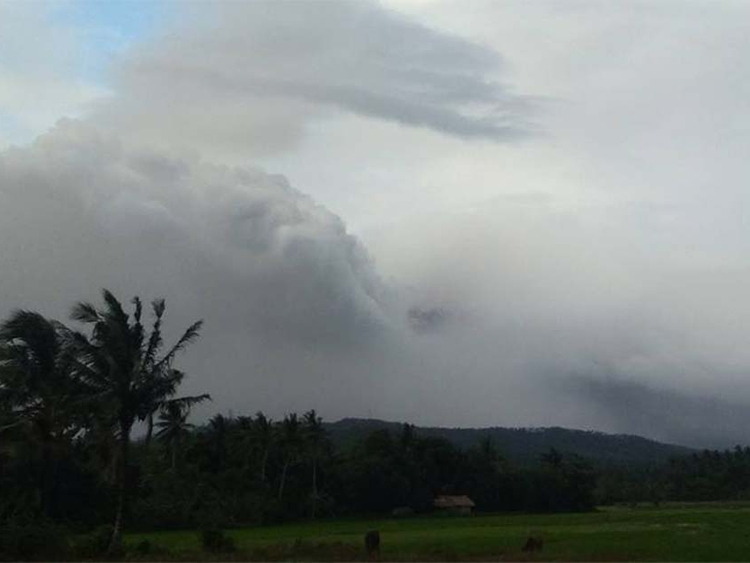
Manila: Authorities, who have choked all entries to the dangerous slopes around an erupting volcano in southern Luzon, vowed on Sunday to evacuate people before heavy rains bring down more volcanic debris from the crater, officials said.
Currently 81,000 people have been housed in 69 evacuation centres.
“Lahar flow from Mayon, composed of 9 million cubic metre pyroclastic density currents and 1.5 million cubic metres of ash fall found their way to the Mi-isi, Lidung/Basud, and Buyuan channels, and could bury villages of Camalig and Daraga towns of Albay province since the volcano first spewed ash since Monday,” Philippine Institute of Volcanology and Seismology (Phivolcs) head Renato Solidum told Gulf News on Sunday.
“Sand and rocks were seen near the bridge of Santo Domingo town in Albay,” said Solidum,
“All local government officials were advised to continue issuing warnings about lahar flow,” said Solidum, adding this could ensure the safety of endangered parts of Albay province — five of its 18 towns such as Camalig, Daraga, Guinobatan, Malilipot, and Santo Domingo; and all its three cities, Legazpi, Ligao, and Tabaco. The volcano is located 330 kilometres southeast of Manila.
Mayon spewed ash and lava three times at 11 in the morning of Sunday. Molten rocks have spread down from the crater, said Solidum, adding that Phivolcs has maintained alert level four (out of five) on the volcano.
Around 770,518 residents out of 1.3 million total population of Albay in 361 villages out of a total of 720 villages in Albay will be directly affected by Mayon’s major eruption, said Solidum.
“The aim is zero-casualty,” said Undersecretary Ricardo Jalad, head of the National Disaster Risk Reduction and Management Council (NDRRMC).
“The other aim is for all evacuees to be safe,” said NDRRMC spokesman Romina Marasigan, adding the NDRRMC, the departments of health and social welfare have prepared to meet the needs of evacuees for a period of three months or more.
The length of emergency period could be assessed immediately after Mayon eruption, said Marasigan.
Some 69,672 evacuees were housed in schools that have remained closed; 12,000 more were sheltered in tents or have stayed with relatives in safer locations.
The health department said it has enough medicine to avert respiratory illnesses due to ash fall.
There is adequate food supply for all displaced people, said the department of social welfare, which called for additional supply of mobile toilets in temporary shelters.
Mayon’s 2,462-metre perfect cone has withstood scarring of 51 deadly and violent eruptions for 500 years, starting 1616. The Philippines is part of the dangerous “Ring of Fire” — its seismic fault lines have quickened earthquakes, lit volcanoes, and rudely re-shaped islands around the Pacific Ocean
In 1991, 800 people, rivers, and towns vanished when Mount Pinatubo in Zambales range, northern Philippines ejected 10 billion tonnes of magma and 22 million tonnes of sulphur dioxide, temporarily depleting ozone. Its sulphuric acid haze dropped world temperature by .5 degrees centigrade from 1991 to 1993. Pinatubo’s Ultra Plinian eruption was the second largest after Novarupta’s eruption in Alaska in 1912. Pinatubo’s toxic metals surpassed the stratosphere pollution of Krakatoa’s eruption in Lampung, Indonesia in 1883.












